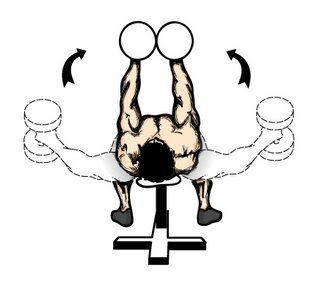Routine for making a big stomach Flat
When we put on weight our bodies heat up internally and our metabolism
slows down because it doesn't need to be running hot. But, one caveat:
the larger the animal the higher its metabolism. Me at 6'6" has a higher
metabolism than your girlfriend at 5'5" - no matter how thin or obese
either of us become. So, high metabolism is one of those issues I always
have to discuss with a bit of physiology behind me. Why does metabolism
slow down when we put on body fat? Simple. Surface area increases by 2X
while body mass increases by 3X. This causes a lot of internal heat and
it gets trapped inside. Ever wonder why heavy people sweat like
marathon runners when they do very little? They're running on hot - but
not running on high metabolism. When metabolism slows down it becomes
harder to lose the weight.
With you putting on 51 lbs your metabolic rate has slowed.
What to do to rev it up?
Revving up metabolism comes from:
- lowering your BMI
- exercising
- putting on muscle
When you lower your BMI your metabolism increases
When you exercise you're revving it up and burning calories - anaerobic or aerobic
When you put on muscle they use up a lot of calories to stay functional -
plus high protein - both spike your metabolism while burning fat
At that assumes two things that will lose your 51 lbs.
- Eat nutritionally good foods
- Add cardio after or before your workouts
On exercise training. Stuart McGill has just come out saying that
athletes and people who train should take time off depending upon the
level of intensity they train. So, if you're a weak, discogenic person
who suffers from back pain - the prescription is to diagnose the
symptoms and workout every 15 minutes for just a few minutes. While, a
powerlifter (on the other spectrum) should workout every other or every 2
other days. The body needs lots of rest. We as a society put too much
emphasis on training everyday - me included. Rather, it's getting in the
right workouts and eating nutritionally. Calories determine,
ultimately, how we look (unless you're doing as much cardio as Michael
Phelps).
Bodybuilding 4-5 times a week, breaking up body parts is still a good
strategy if you're a bodybuilder. Fitness models, same. Powerlifters:
3-4 times a week. MMA and Track and Field - it's trickier because some
of the training happens outside of the gym.
Anyways: to lose that gut. Eat clean: high protein, low carbs (who
should be low glycemic and fibre based), lots of greens and water.
Workouts: train balance and keep the core stiff when you train. With
proper techniques you can lift more effectively and thus put on more
muscle. Hope this helps. Don't neglect your cardio post workout - that
really burns the calories.
Routine for making a big stomach Flat






